A flattened, sandy oval pressed like a wad of gum into Brooklyn’s ample instep, Coney Island has been a draw for photographers for as long as the medium has existed. Although its marshes and dunes gave way to urban sprawl by the late 19th century, the island retains a ribbon of beach that during the stifling summer months is a godsend to untold thousands of city-dwellers and the photographers who document their presence. Every summer day New Yorkers come here in droves, disgorged from nearby subways, seeking boardwalk, beach and ocean, a minor league baseball game or the charms of an amusement park.
They travel long distances—two hours by subway from the Bronx!—for the same reasons their parents and grandparents did, or would have if they could: to claim their inheritence beside the Atlantic in the city’s most egalitarian public space. They come despite a lingering seediness, despite rats, overcrowding and biohazards. These include rip-currents, melinoma and such colorful urban bric-à-brac as spent condoms or used syringes bobbing on the tides. (Sightings of these last two, perennial in decades past, are thankfully less common these days).
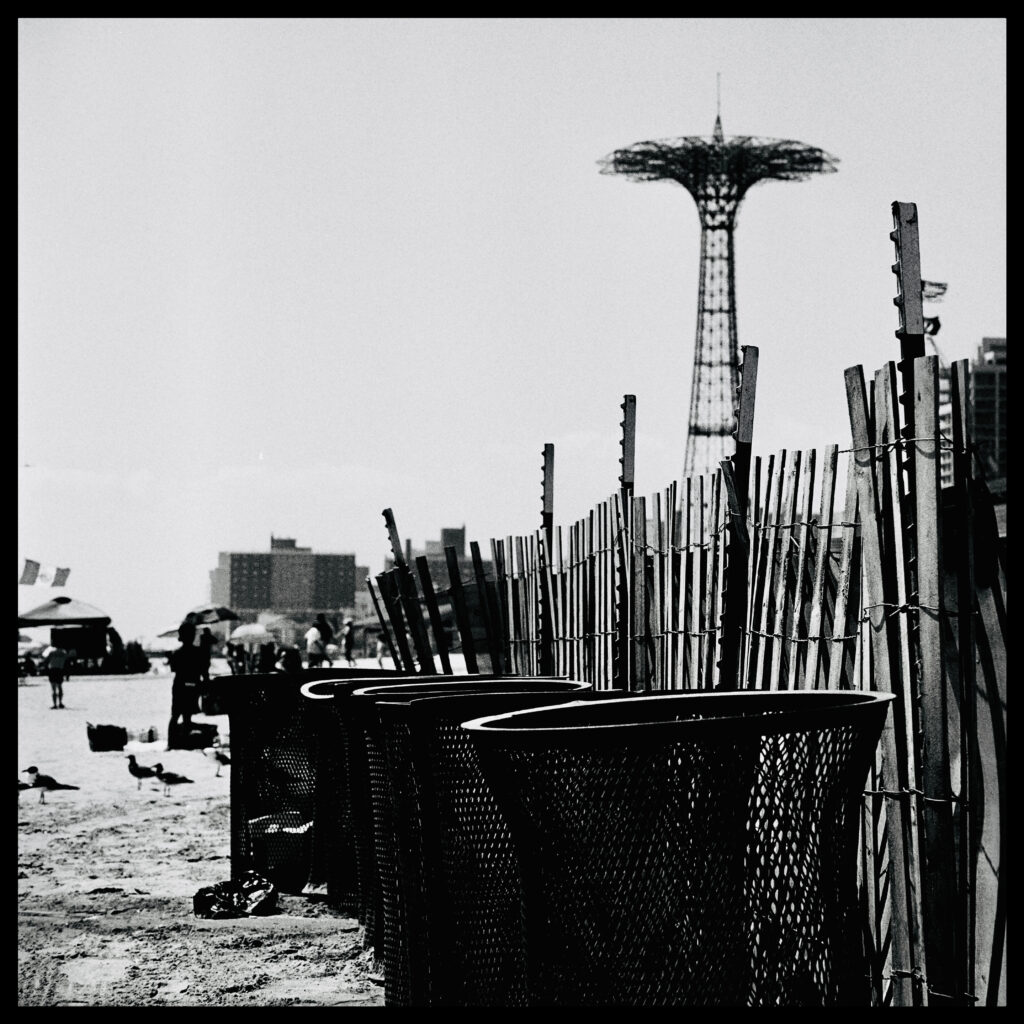
While I’ve not bathed in the waters off Coney Island since my twenties—July ’91 to be precise, a month endured like each of my early summers here without the benefit of air-conditioning—I have returned many times since to soak in the atmosphere. More than any other place I know, its boardwalk and beaches retain a sense of an earlier New York, flamboyant and unapologetic, at ease with its outer-borough accent and ready to strut. The island is in its way a rebuke to Times Square, a numbing mega-plex whose corporate makeover at the close of the last century dazzles out-of-town visitors but leaves many New Yorkers cold.
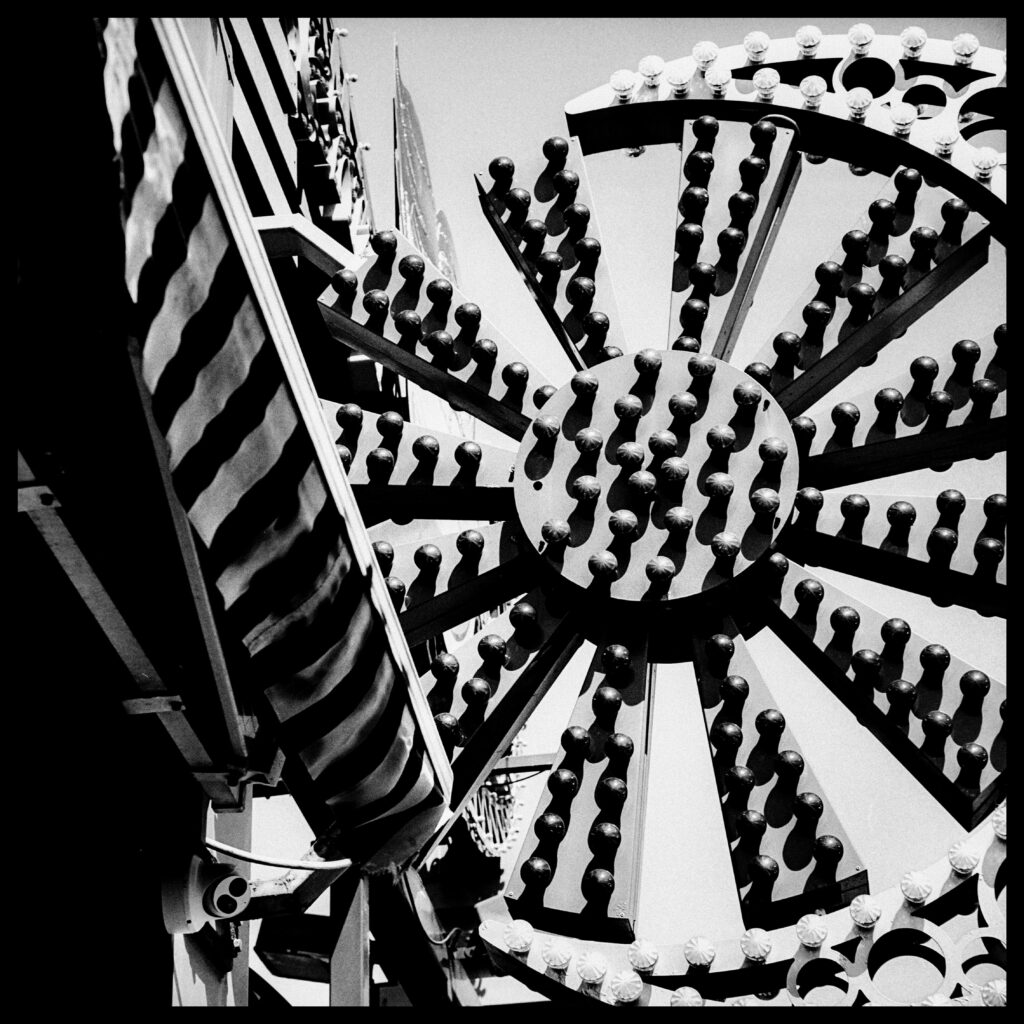
In recent years my visits to Coney Island have unfolded in the company of my Tele-Rolleiflex, a camera tailor-made for the setting. Its telephoto lens, shot from a waist-level position, allows me to get close to the action without crowding my subjects. More than any other camera in my collection, its double-barreled snout also marks me as a character— “Mister Photographer,” as one Puerto Rican woman of a certain age (not so very far from my own) said as she called out to me on a recent visit. She is the beaming lady, second from the right, in the photo below.
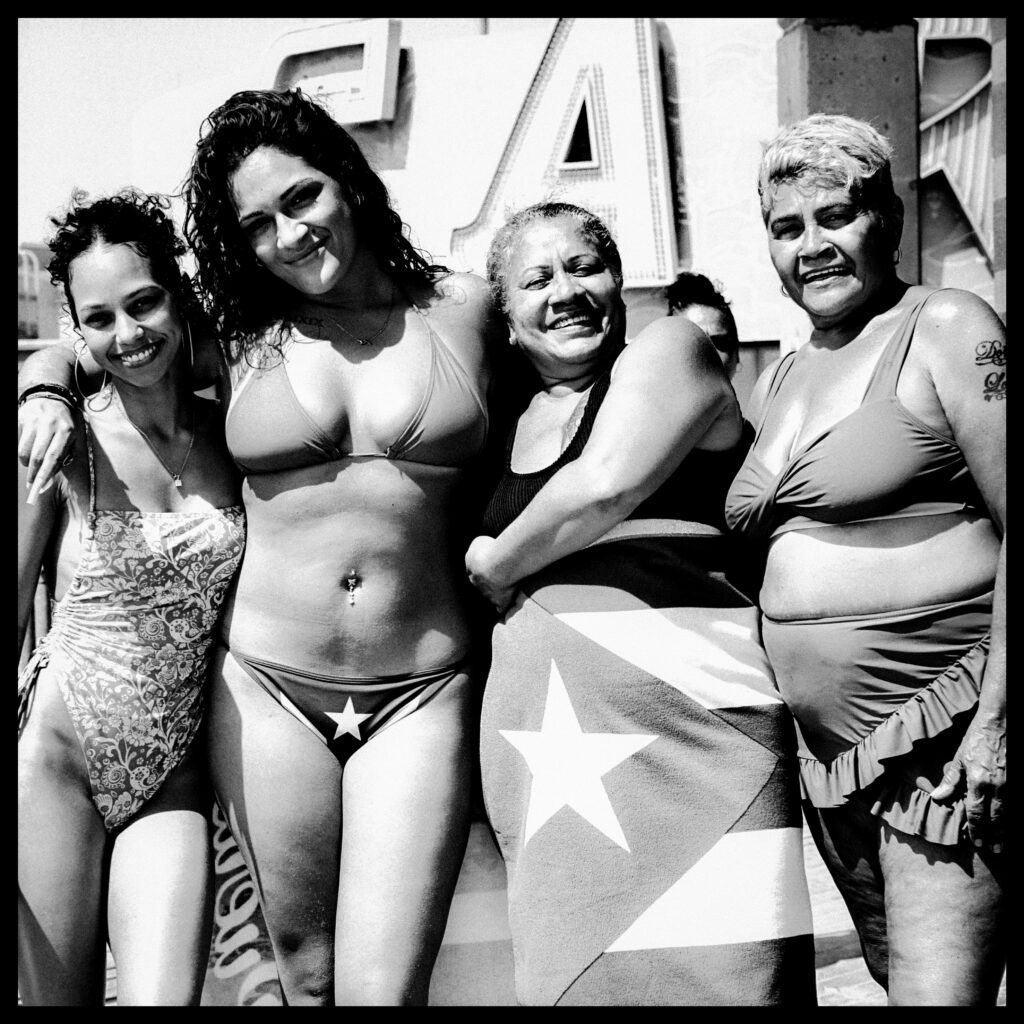
In any other place, that salutation, uttered aloud, might come with a dose of sarcasm, but here it was conveyed with an affectionate wink. In hindsight, this neoyorquina’s message reflects a deeper credo that these days seems almost quaint: wherever you’re from, however weird or eccentric, you belong here. On Coney Island, at least, that idea—hopelessly schmaltzy; American in the least xenophobic, the best sense—continues to flourish.
The “film roll” of frames below is composed from photos taken on two visits to Coney Island one year apart. In summer 2024 I made exposures mid-morning, when the light was still soft and the beach was filled with young children and their grandparents, many of them immigrants from Eastern Europe, Russia and Latin America. The later outing, this past August, occured in the heat of the day, with abundant exposed flesh and the beach and boardwalk under relentless direct sunlight having the quality of a great broiling bazaar (epitomized in the featured image at the top). The commodity peddled?
Summer—in all of its sweat and vitality.
Film Roll
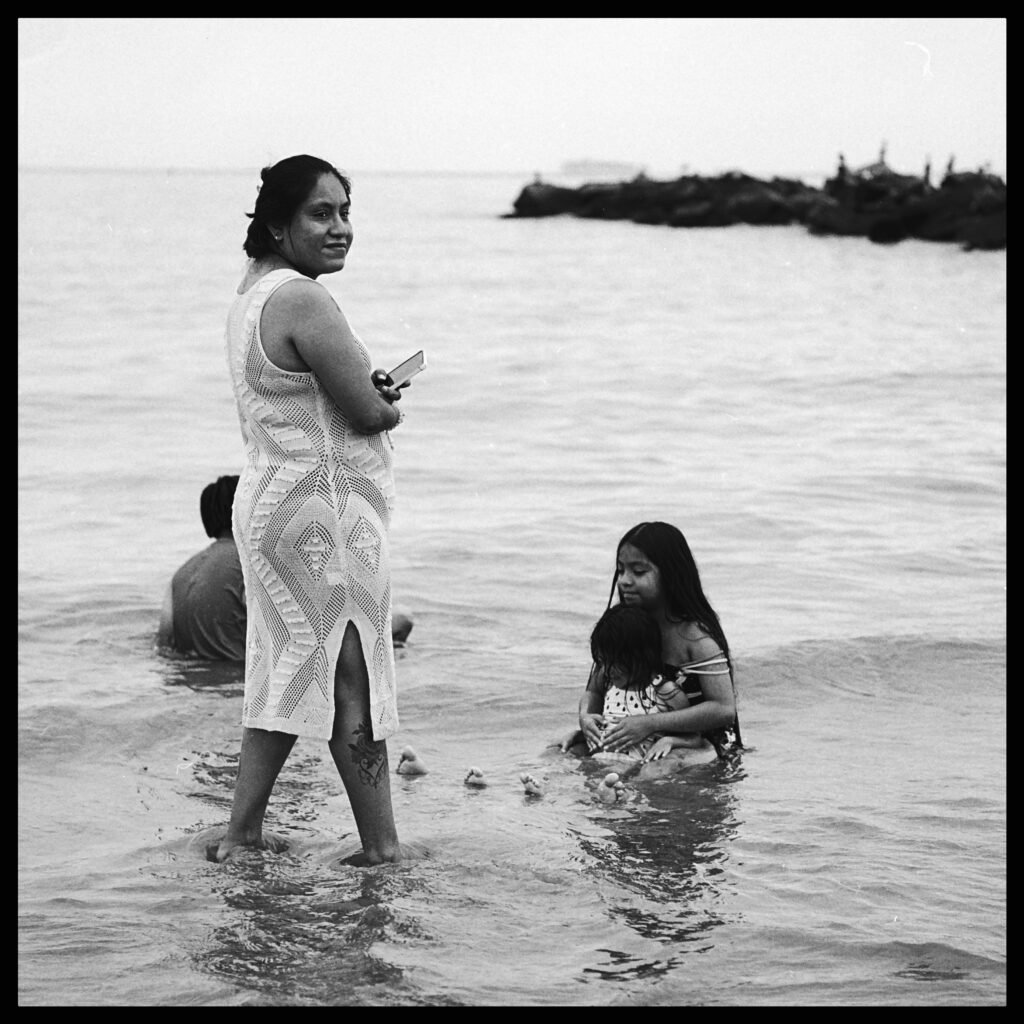
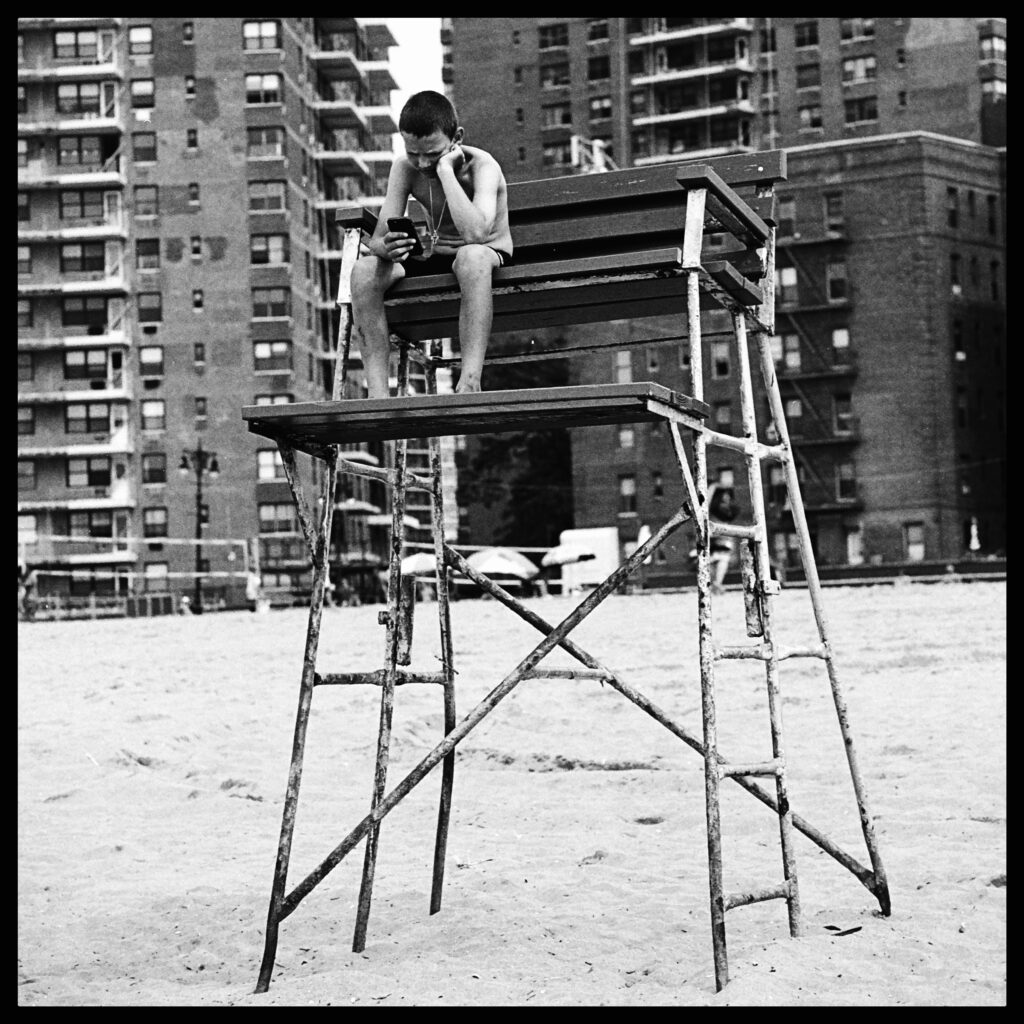
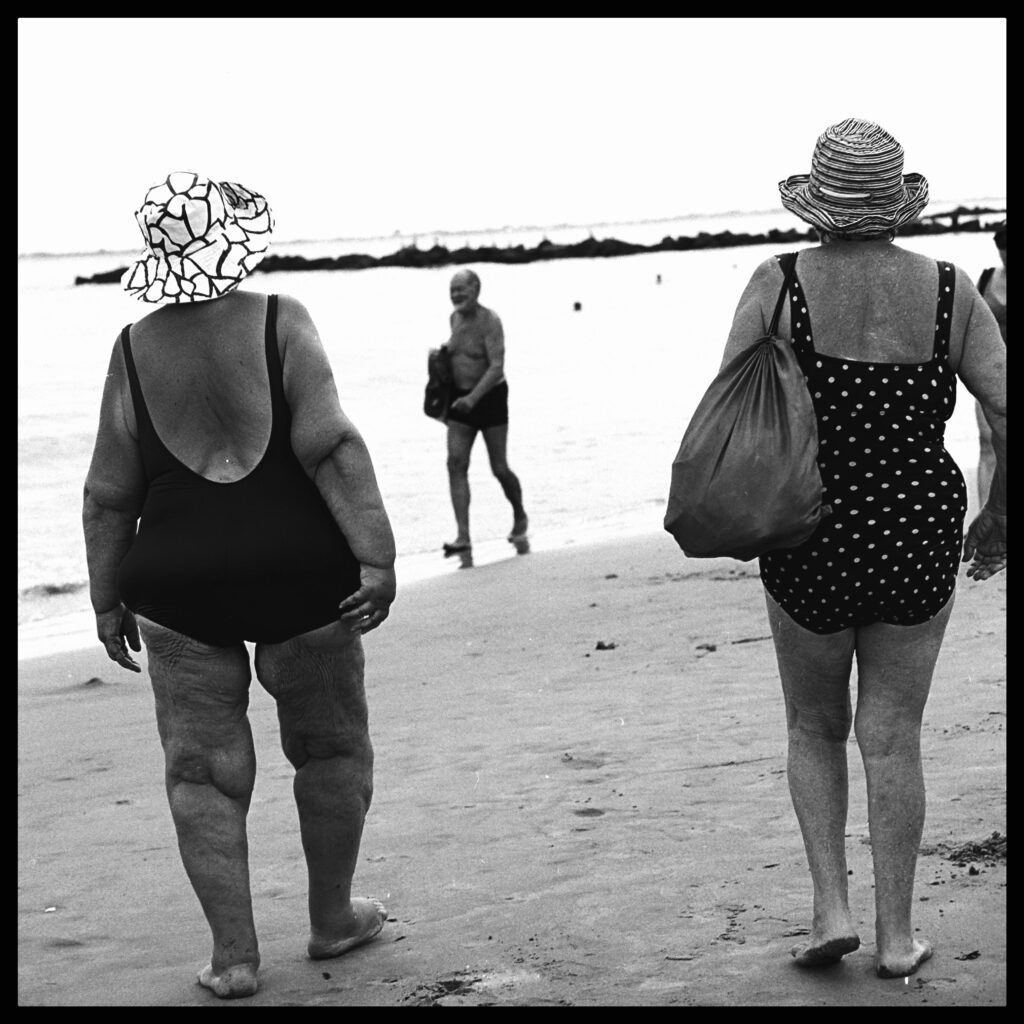
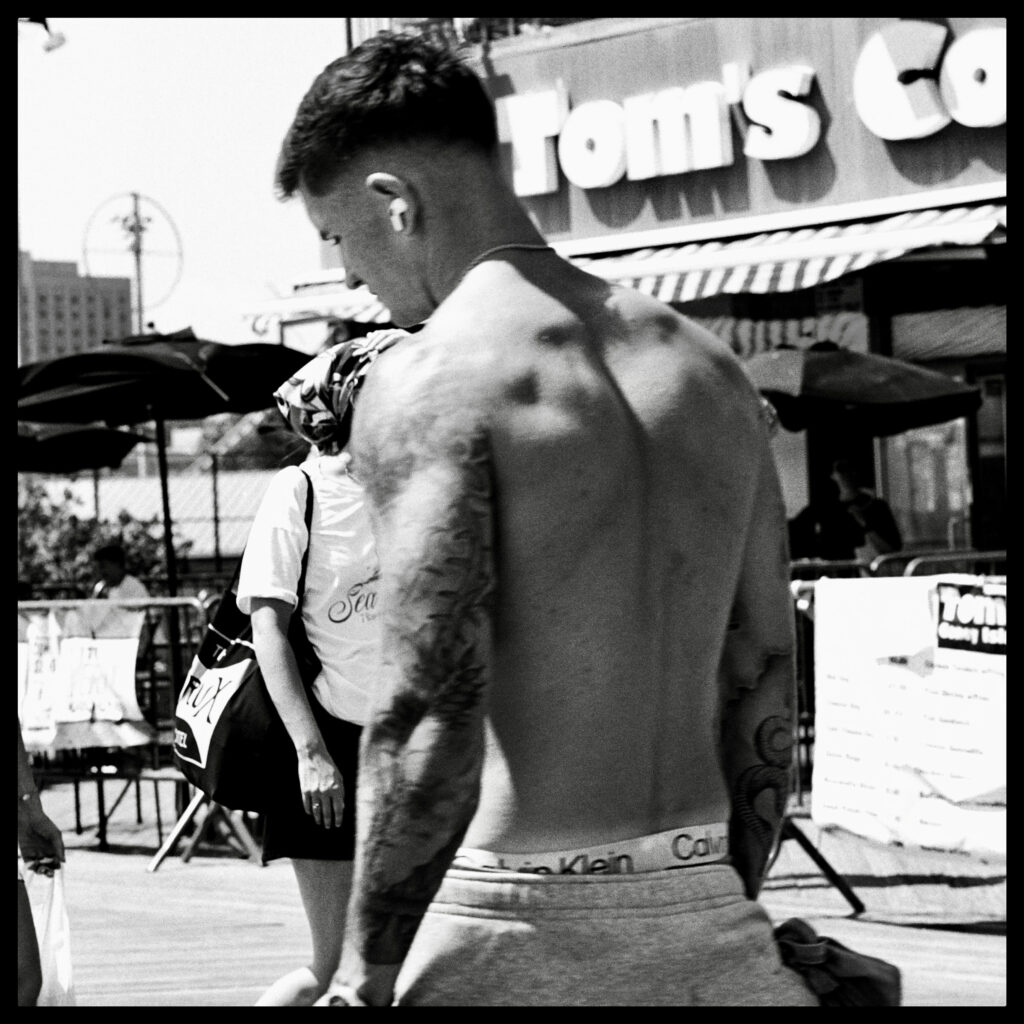
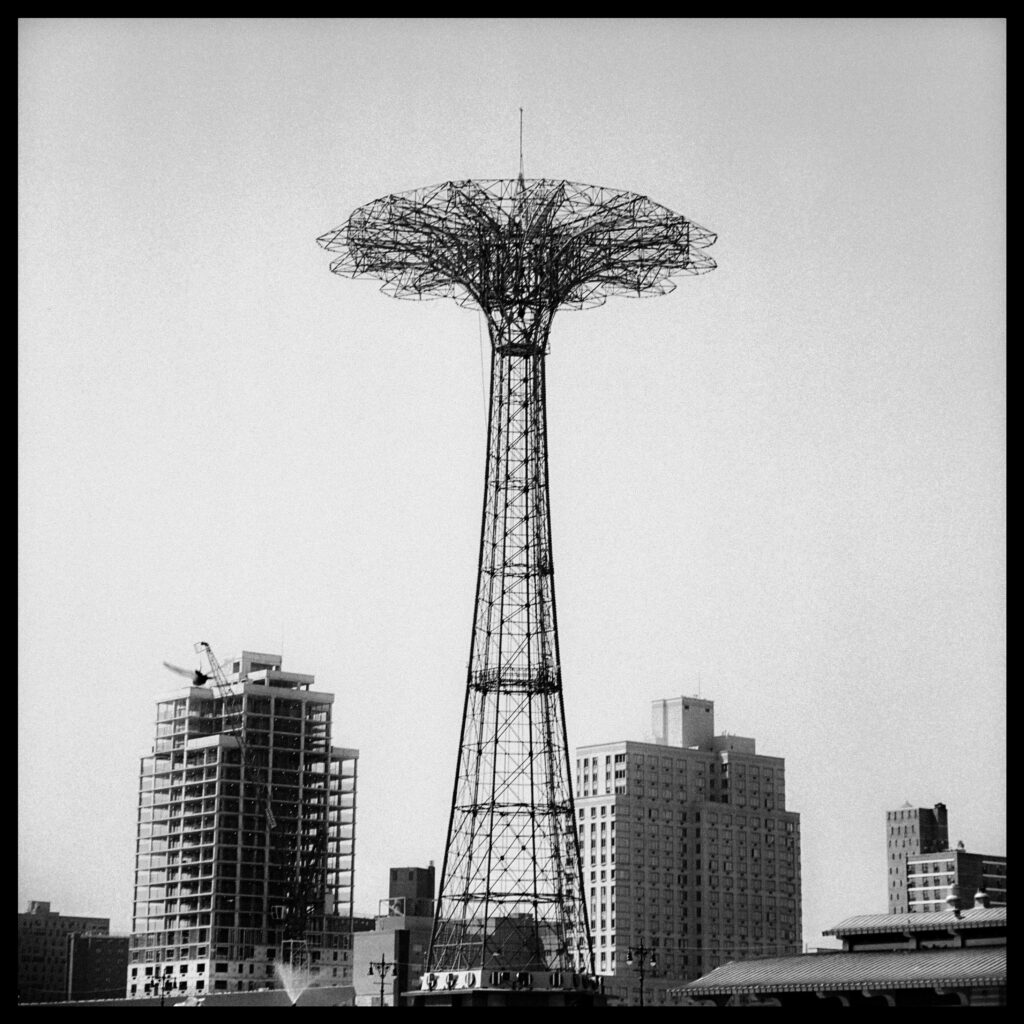
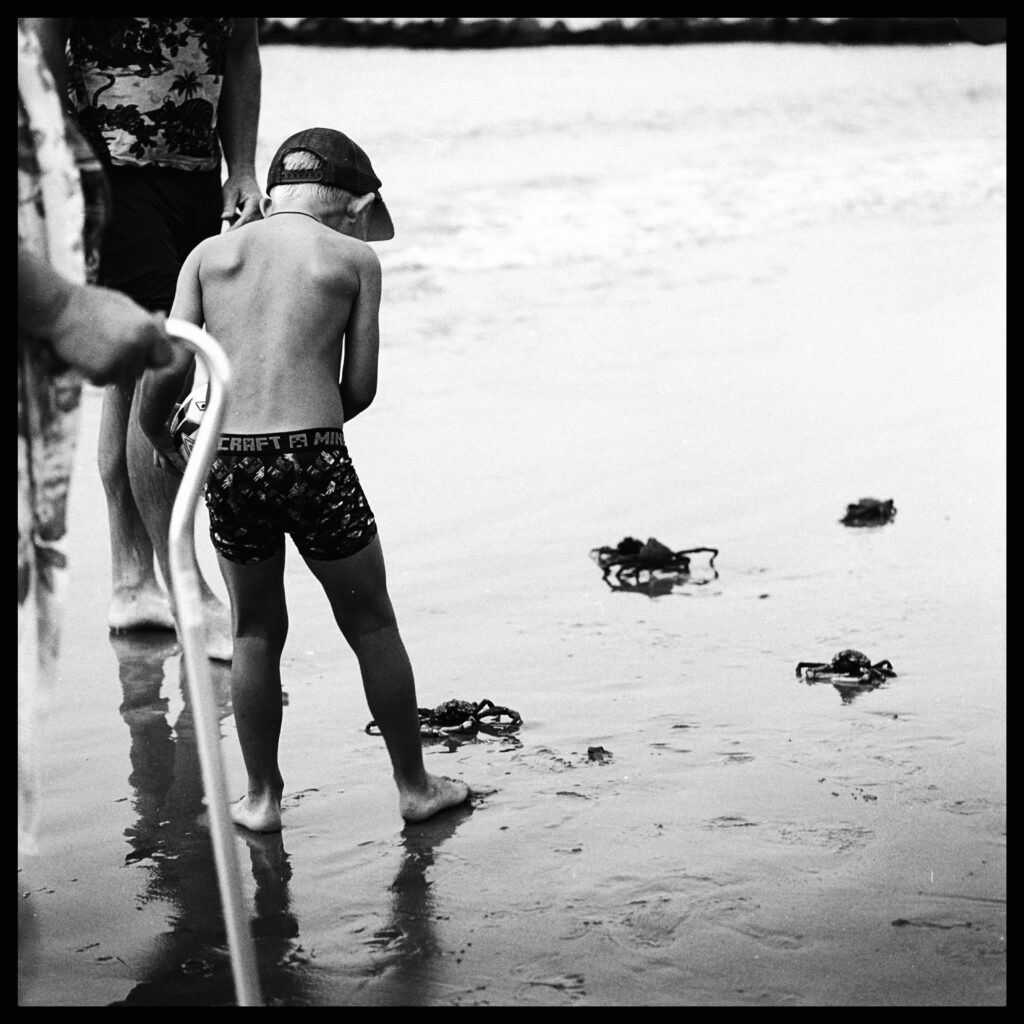
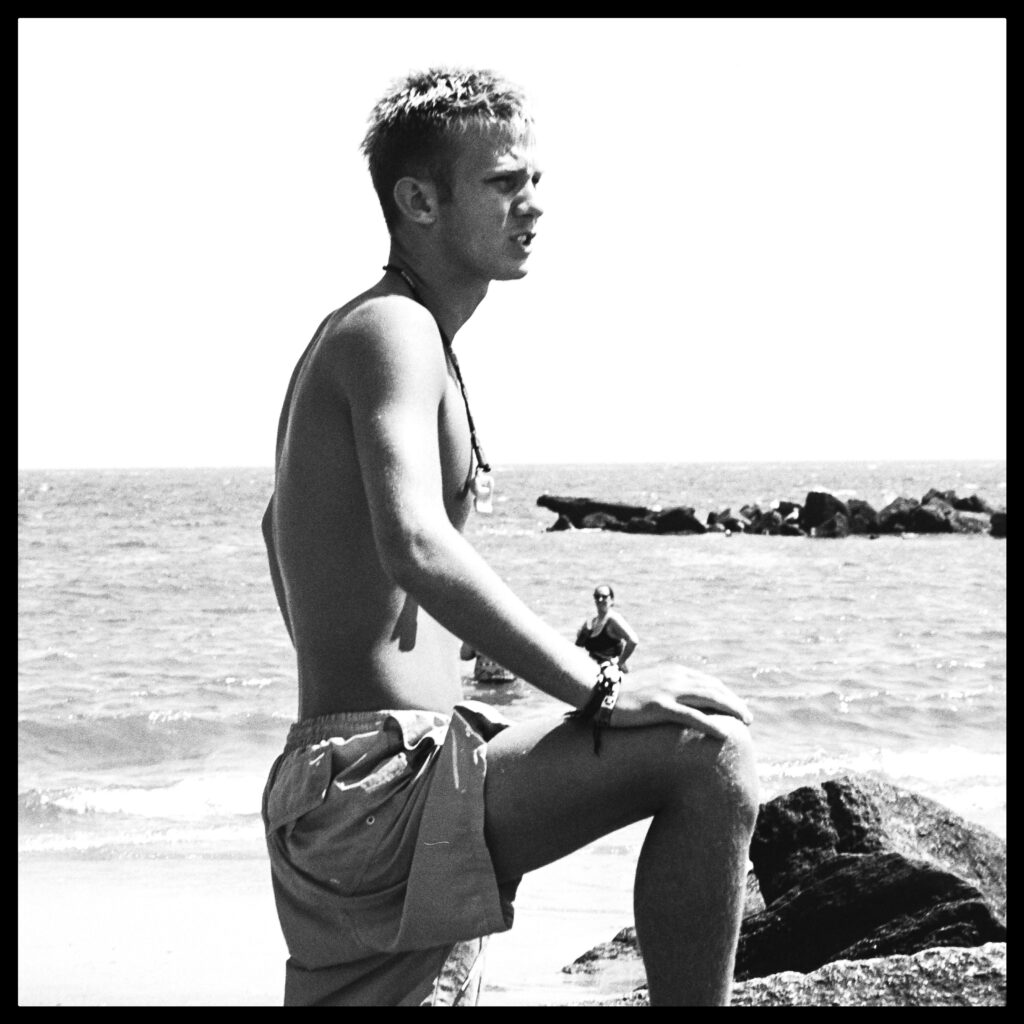
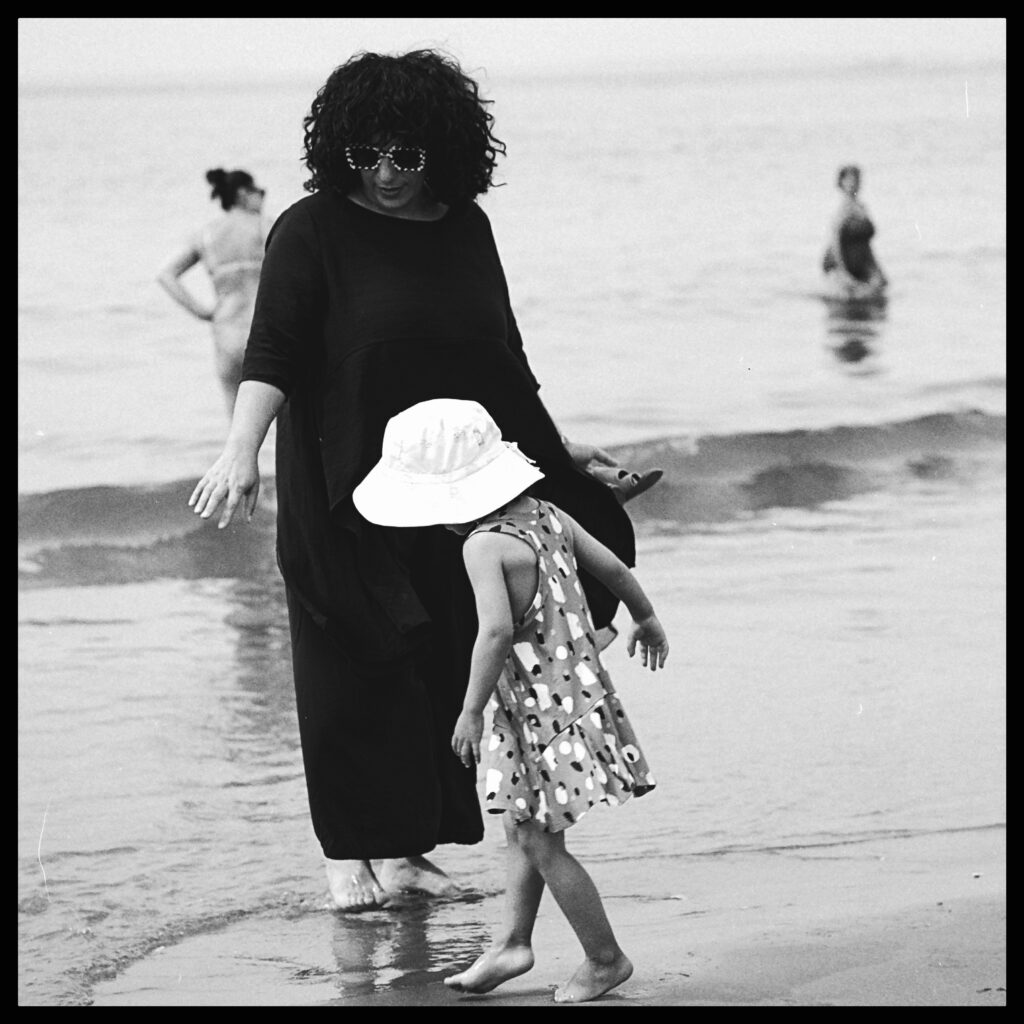
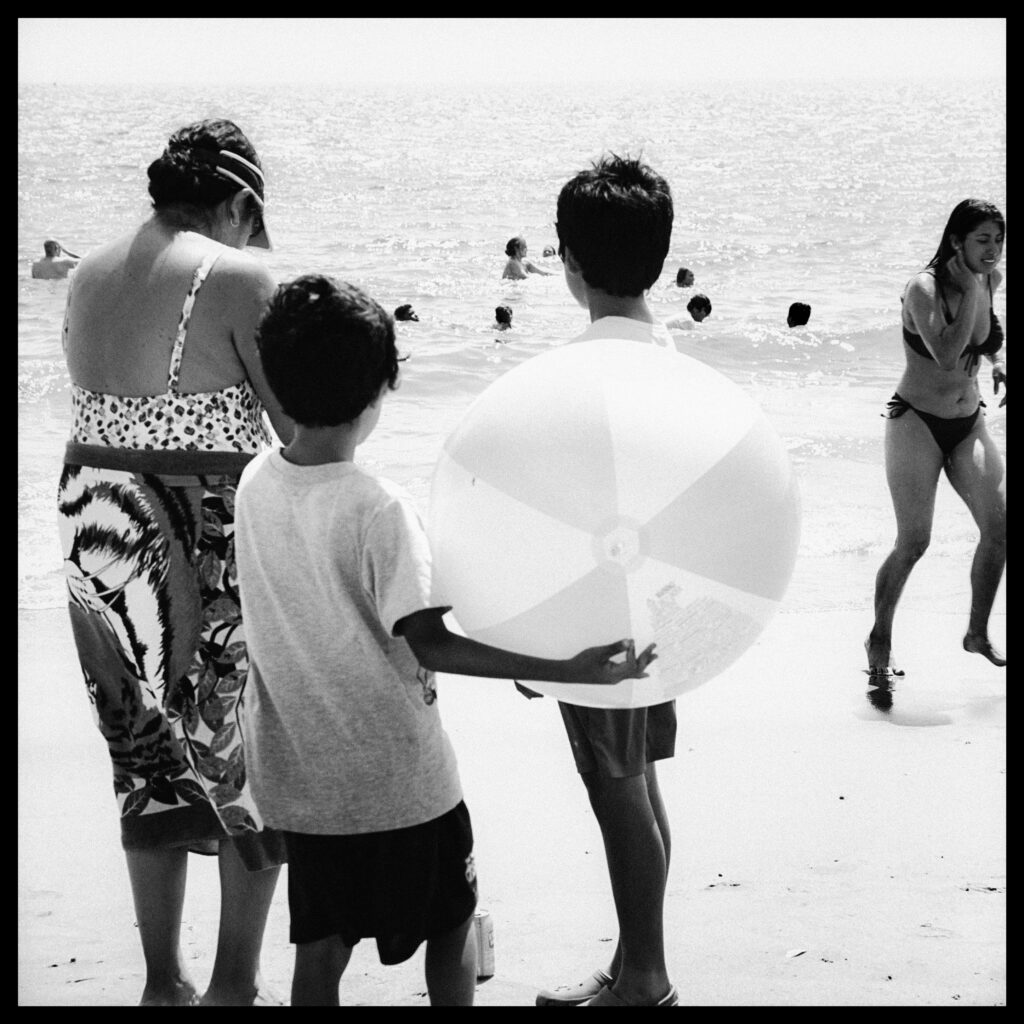
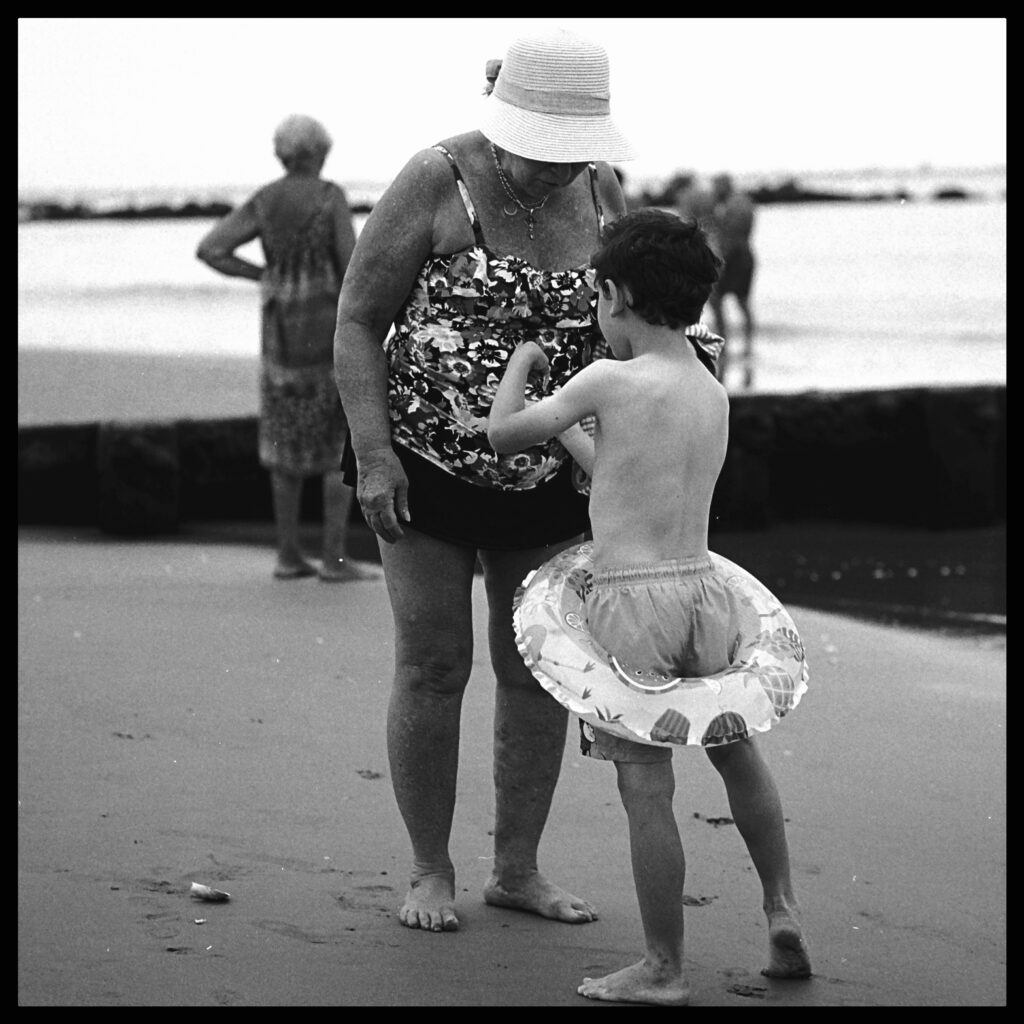
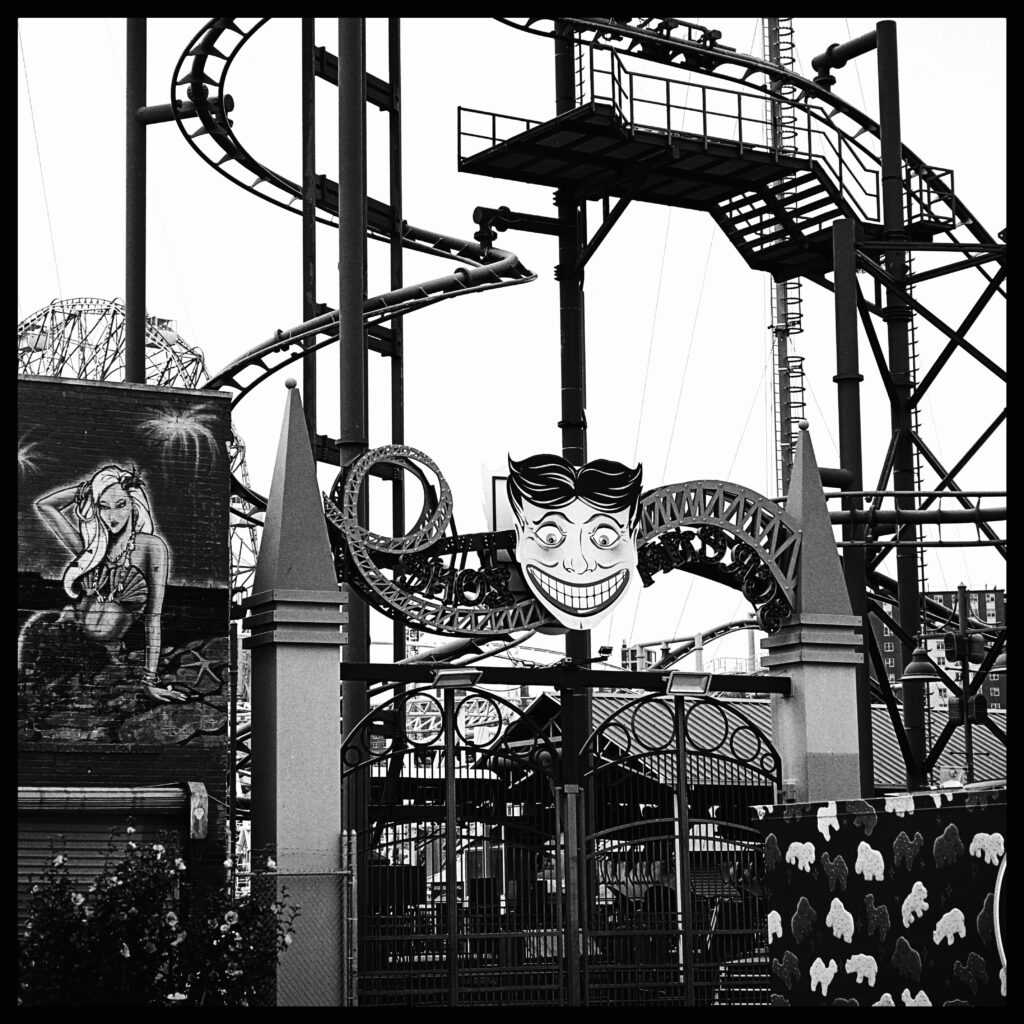
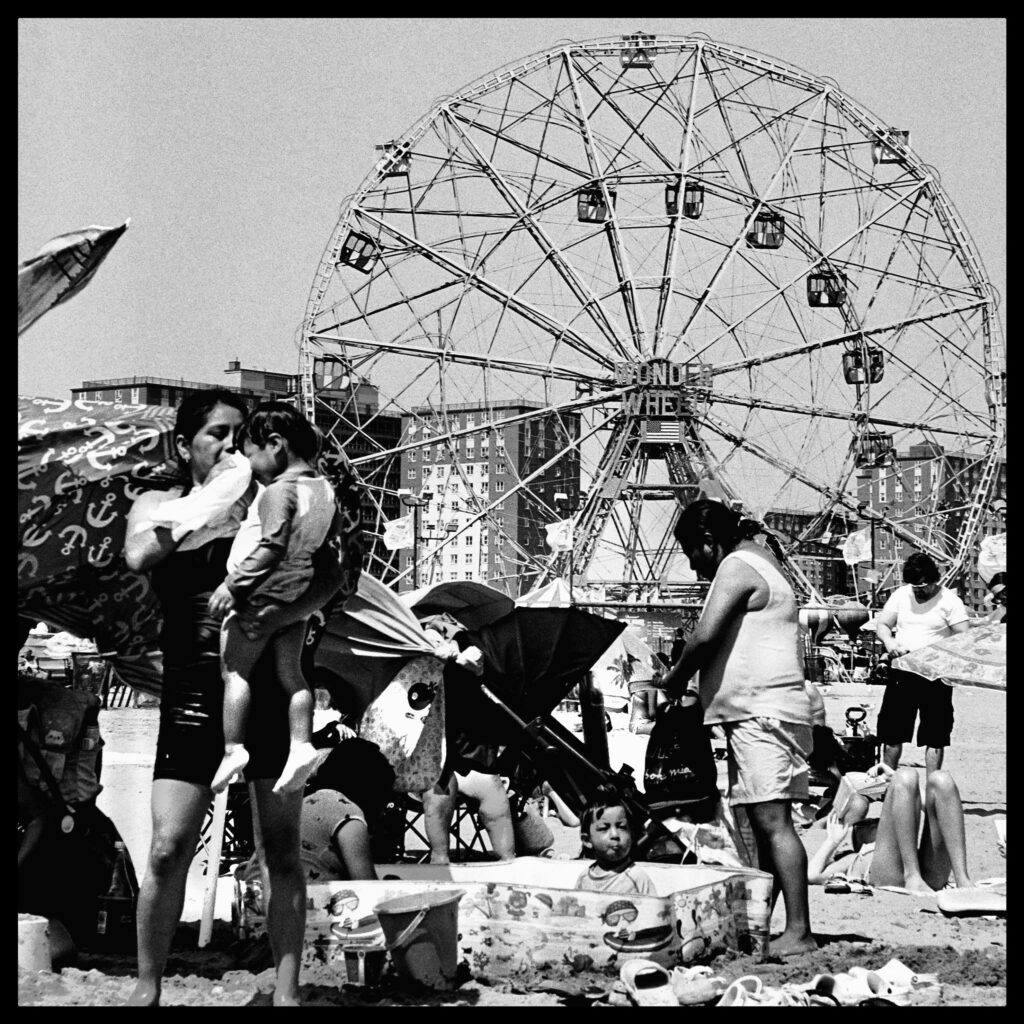
Historical Note
The fifth image in this series shows the Parachute Jump, which soars 260 feet (80 meters) above the sand. A highlight of the 1939 World’s Fair, this structure—yes, it was an actual parachute jump—was relocated from Flushing Meadows to an amusement park in Coney Island in 1942. A landmark sometimes called “Brooklyn’s Eiffel Tower” (whether earnestly or ironically depends on the speaker), it ceased operations in 1960.
Technical Note
I shot these images on Kodak Tri-X 400 with a 1960 Tele-Rolleiflex whose native lens is the 135mm f4 Zeiss Sonnar. For frames dated 2024 I used PMK Pyrocat Developer; those dated 2025 were processed in Kodak HC-110. I scanned the negatives with a Fujifilm XT-50 digital camera with a 200 mm f2.8 Fujinon macro lens. Aside from cropping adjustments no digital alterations were made. I’ve printed most of the series in the darkroom on Ilford FB paper. Unsurprisingly, this makes the photos look great.
COVER IMAGE: Great Broiling Bazaar, 2025
Share this post:
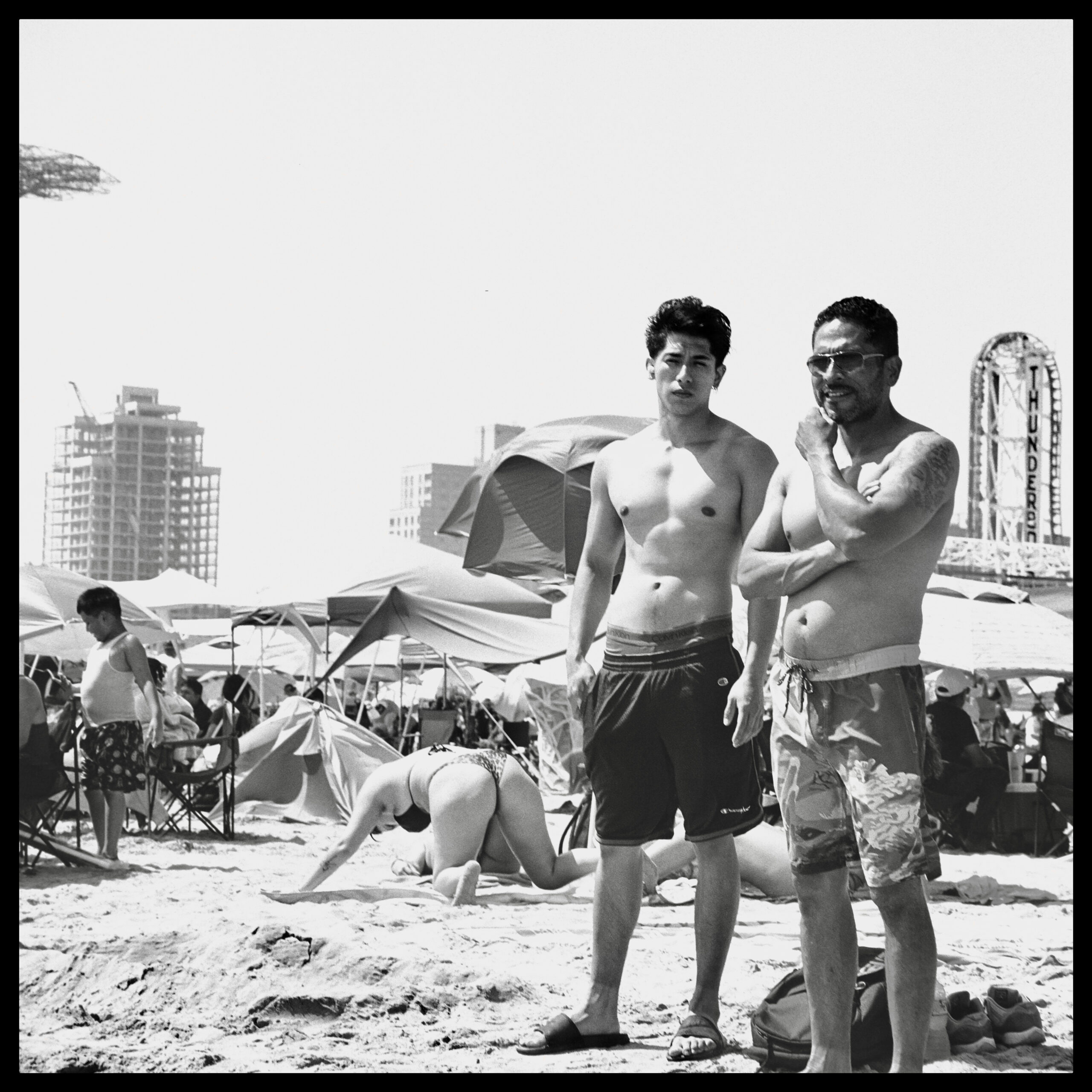
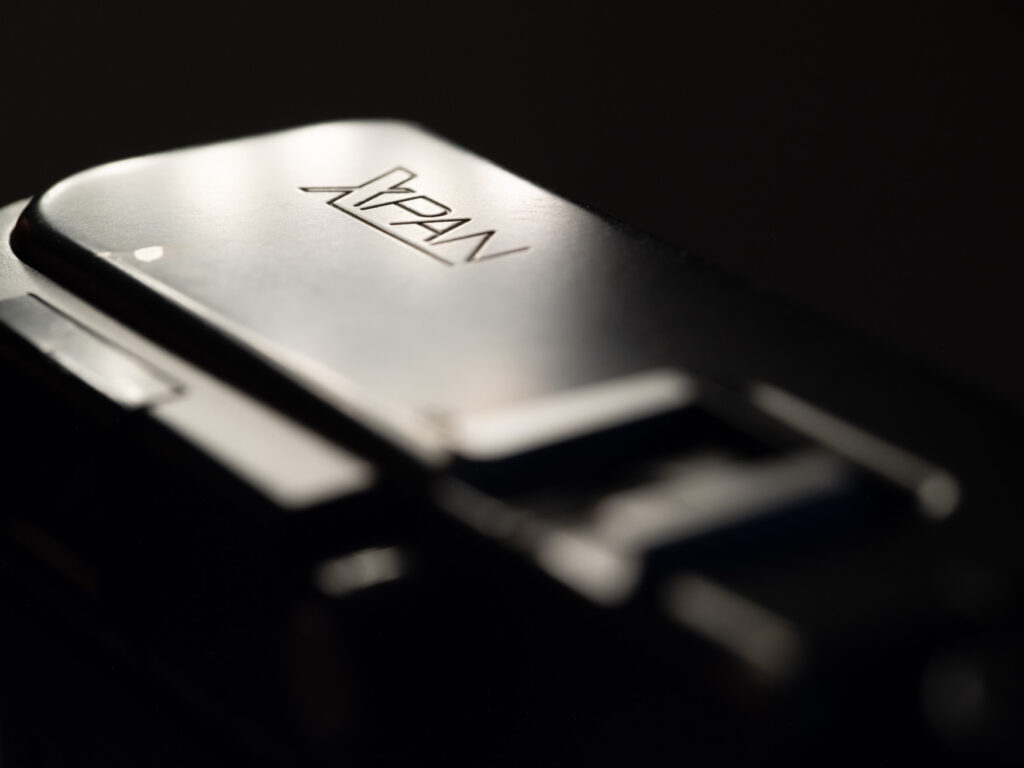
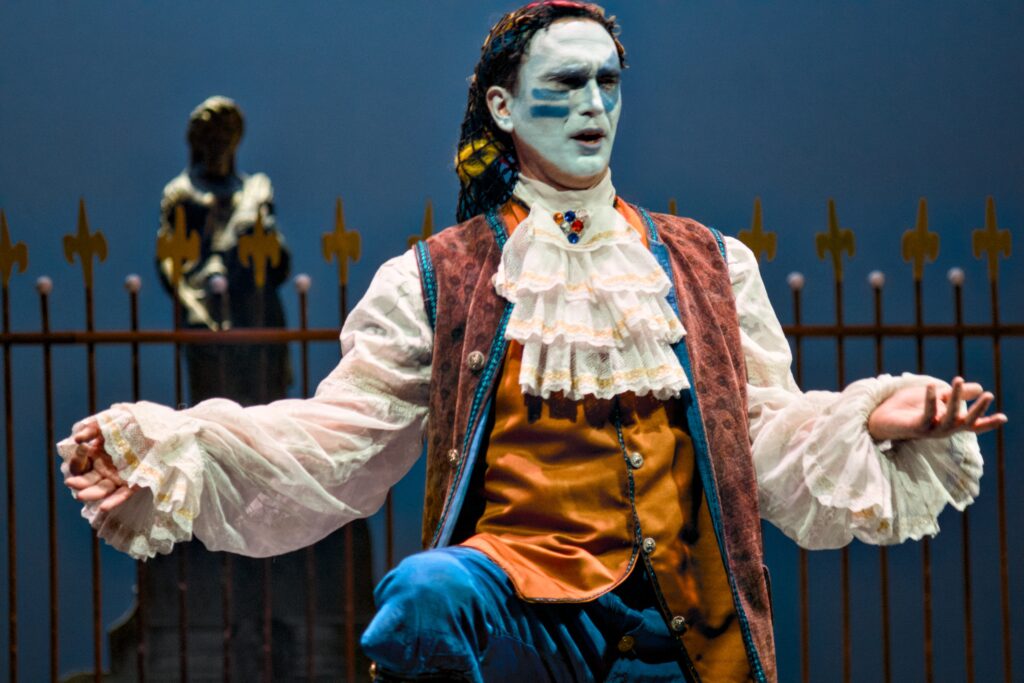
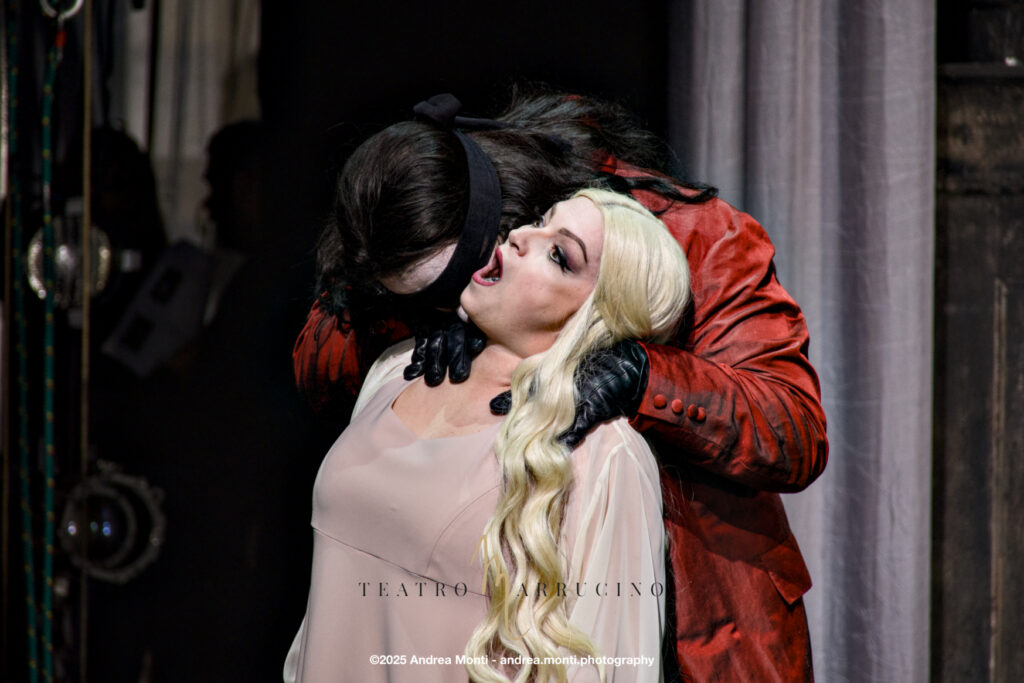
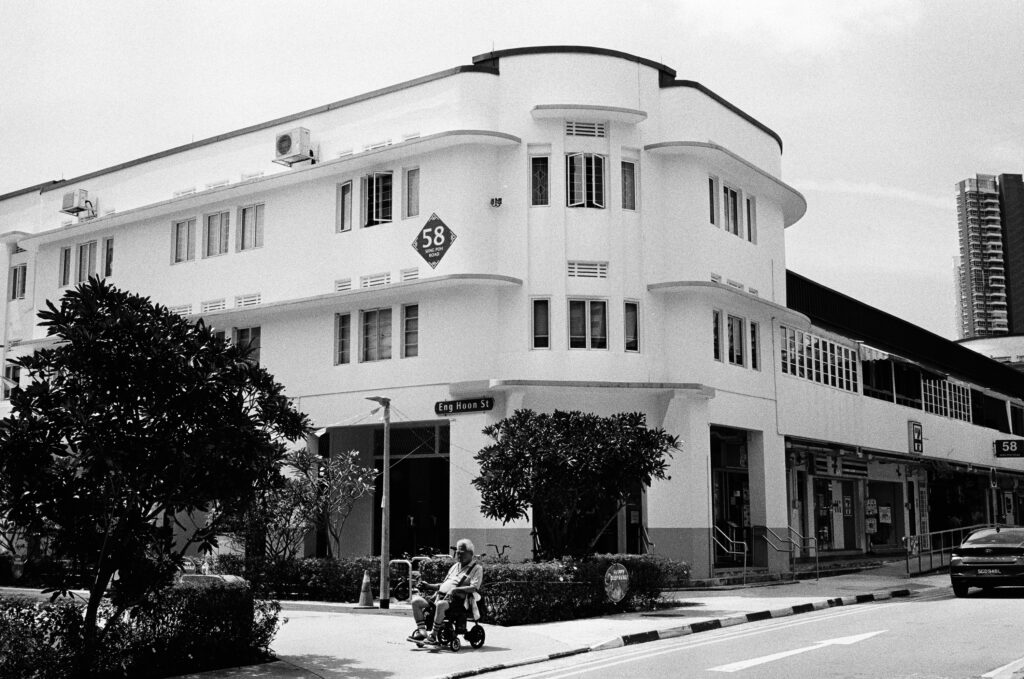
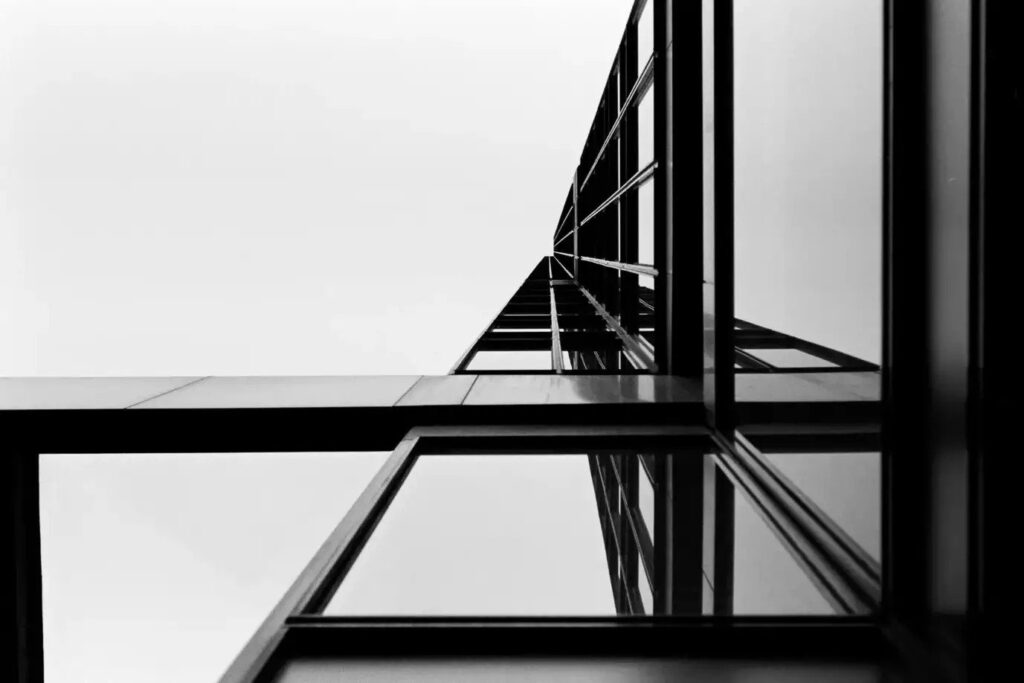
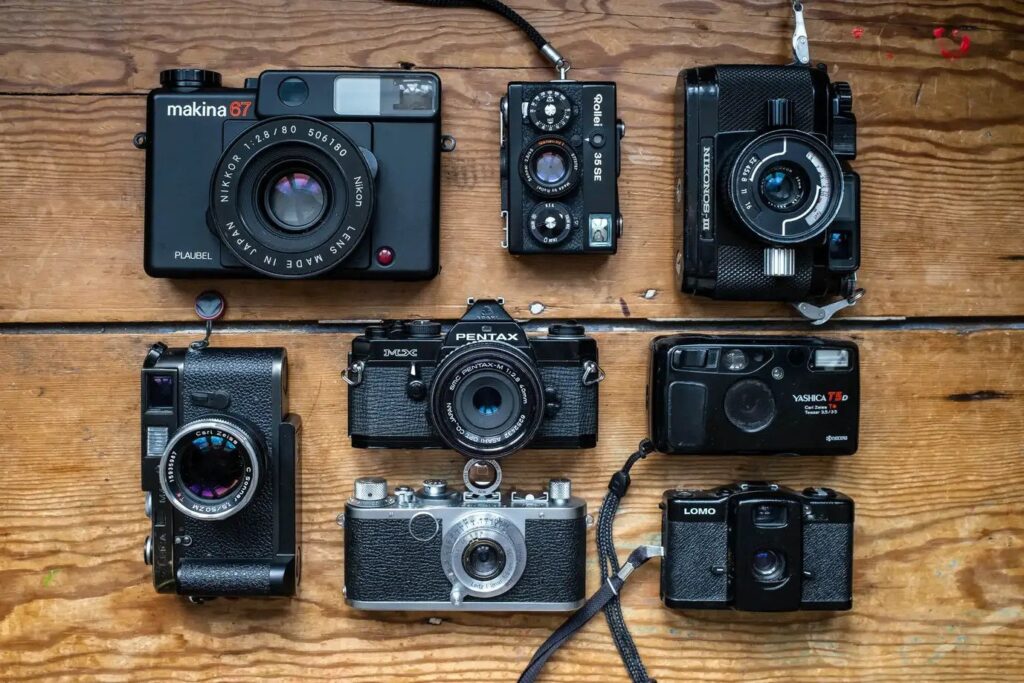
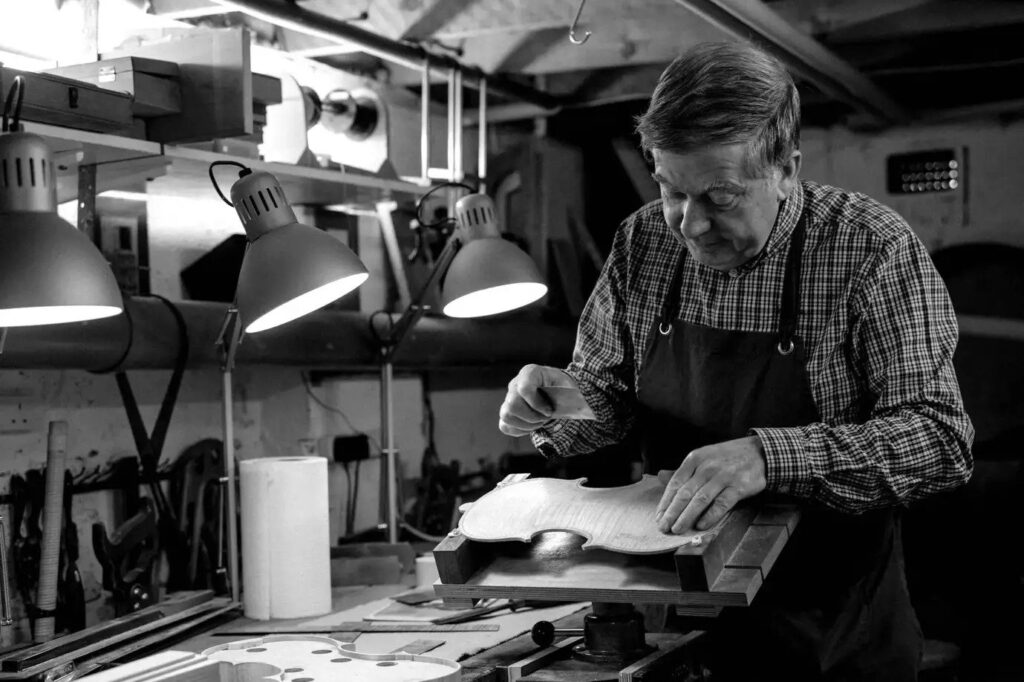
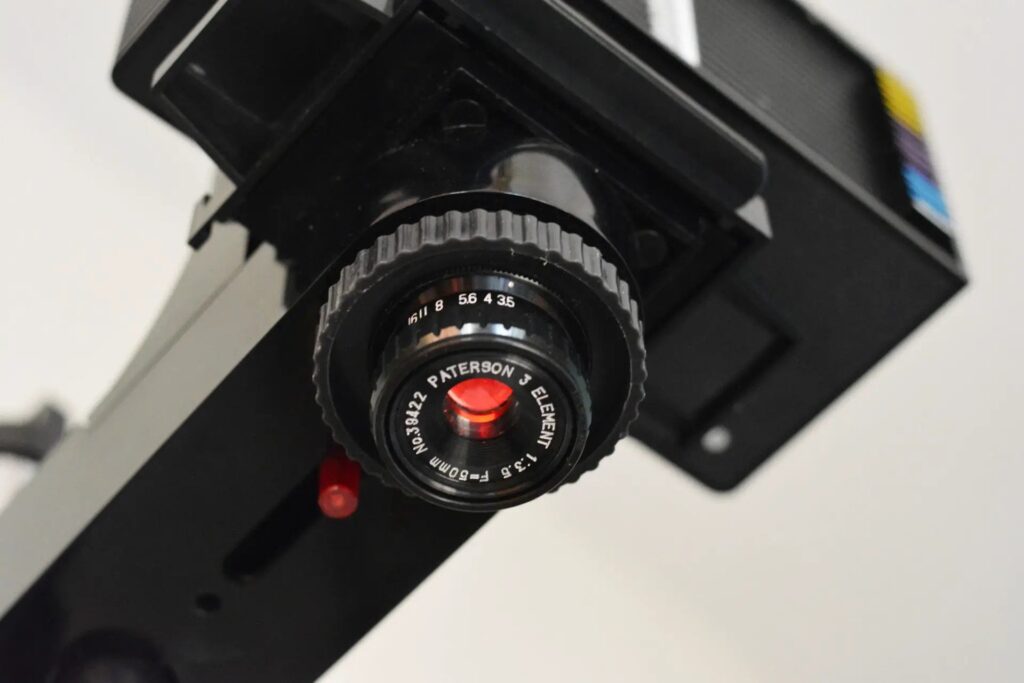
Comments
Jukka Reimola on Coney Island with A Tele-Rolleiflex
Comment posted: 26/10/2025
Comment posted: 26/10/2025
Stewart Waller on Coney Island with A Tele-Rolleiflex
Comment posted: 26/10/2025
Comment posted: 26/10/2025
Matthew Bigwood on Coney Island with A Tele-Rolleiflex
Comment posted: 26/10/2025
Comment posted: 26/10/2025
Sergio Palazzi on Coney Island with A Tele-Rolleiflex
Comment posted: 26/10/2025
Comment posted: 26/10/2025
Stefan Wilde on Coney Island with A Tele-Rolleiflex
Comment posted: 26/10/2025
Comment posted: 26/10/2025
Curtis Heikkinen on Coney Island with A Tele-Rolleiflex
Comment posted: 26/10/2025
Comment posted: 26/10/2025
Gary Smith on Coney Island with A Tele-Rolleiflex
Comment posted: 26/10/2025
Comment posted: 26/10/2025
Comment posted: 26/10/2025
Comment posted: 26/10/2025
Alastair Bell on Coney Island with A Tele-Rolleiflex
Comment posted: 26/10/2025
The feel is almost timeless and it's only really the clothing that gives it away.
Comment posted: 26/10/2025
Kodachromeguy on Coney Island with A Tele-Rolleiflex
Comment posted: 26/10/2025
A Tele-Rolleiflex, nice! Is the taking lens on your body intact, with no deamination?
Unfortunately, I have not been to Coney Island since 1999:
https://worldofdecay.blogspot.com/2017/12/from-archives-coney-island-1999.html
Comment posted: 26/10/2025
Comment posted: 26/10/2025
Comment posted: 26/10/2025
Stefan Wilde on Coney Island with A Tele-Rolleiflex
Comment posted: 26/10/2025
Comment posted: 26/10/2025
Walter Reumkens on Coney Island with A Tele-Rolleiflex
Comment posted: 26/10/2025
Comment posted: 26/10/2025
Ron Duda on Coney Island with A Tele-Rolleiflex
Comment posted: 26/10/2025
Comment posted: 26/10/2025
Alexander Seidler on Coney Island with A Tele-Rolleiflex
Comment posted: 27/10/2025
Comment posted: 27/10/2025
Michael Jardine on Coney Island with A Tele-Rolleiflex
Comment posted: 27/10/2025
Comment posted: 27/10/2025
Charles Young on Coney Island with A Tele-Rolleiflex
Comment posted: 27/10/2025
Comment posted: 27/10/2025
Ibraar Hussain on Coney Island with A Tele-Rolleiflex
Comment posted: 27/10/2025
Great stuff as always
Comment posted: 27/10/2025
Scott Ferguson on Coney Island with A Tele-Rolleiflex
Comment posted: 27/10/2025
I am not at all surprised, but this is a remarkable post with amazing photos! I love the way you find really interesting frames with great graphic compositions whether the subject is people or a line of trash bins. And the quality of the Tri-X is terrific! I really like the look of the Tele-Rolleiflex -- very interesting piece of gear that I was not aware of. I also love your reflections on Coney Island, especially as contrasted with the corporate takeover of Times Square. I like finding those pockets of New York that have real personality, and Coney Island is a great one! Really great shooting and writing. Inspirational!
Best,
s
Comment posted: 27/10/2025
Dean Lawrence on Coney Island with A Tele-Rolleiflex
Comment posted: 27/10/2025
A excellent set and I loved reading about your times taking images there. To quote Ben E King, " you can almost taste the hot dogs and French fries they sell". Of course slightly younger people may remember Bruce Willis saying the same, just not as well.
Really good post thank you for sharing.
Dean.
Comment posted: 27/10/2025
Jeffery Luhn on Coney Island with A Tele-Rolleiflex
Comment posted: 28/10/2025
I really enjoyed the collection of photos. You captured a lot of interesting moments. I'm guessing that folks weren't objecting to you shooting because you had an old style camera. The telephoto also helps, I'm sure. I'm a California boy, but I went to NYC for several years in a row for Toy Fair in February from 1983-1988. I told some local workmates I wanted to visit Coney Island and they all asked, "Why?" One of them took me there on a very cold Sunday. Freezing! The place was vacant except for...The Polar Bear Club swimmers! It's a group of adventurist folks that swim in the ocean in winter. New Years day is their big gathering, but they do their thing every winter all over the world. SO SAD I DIDN'T HAVE A CAMERA! It goes to prove that Coney Island is full of surprises.
I want to mention that Rolleicord TLR cameras are much less expensive, but deliver the same quality as the standard Rolleiflex models. Same lens, but a knob winder instead of a crank. Some other feature differences too. It's a good entry point for people wanting to buy what I feel is one of the best cameras ever made. Keep shooting and posting, David. I always enjoy your text and photos!
Jeffery
Comment posted: 28/10/2025
Comment posted: 28/10/2025
Comment posted: 28/10/2025